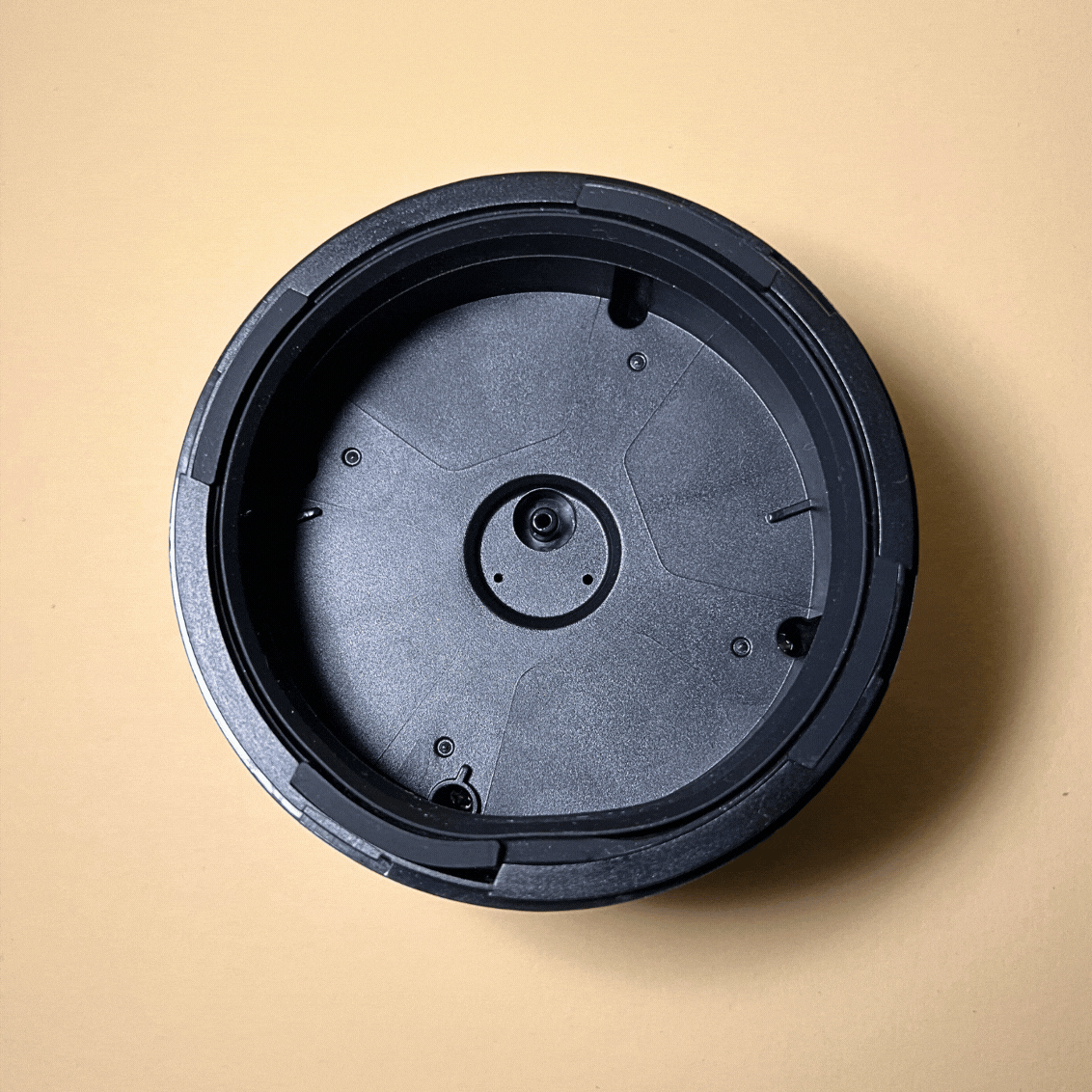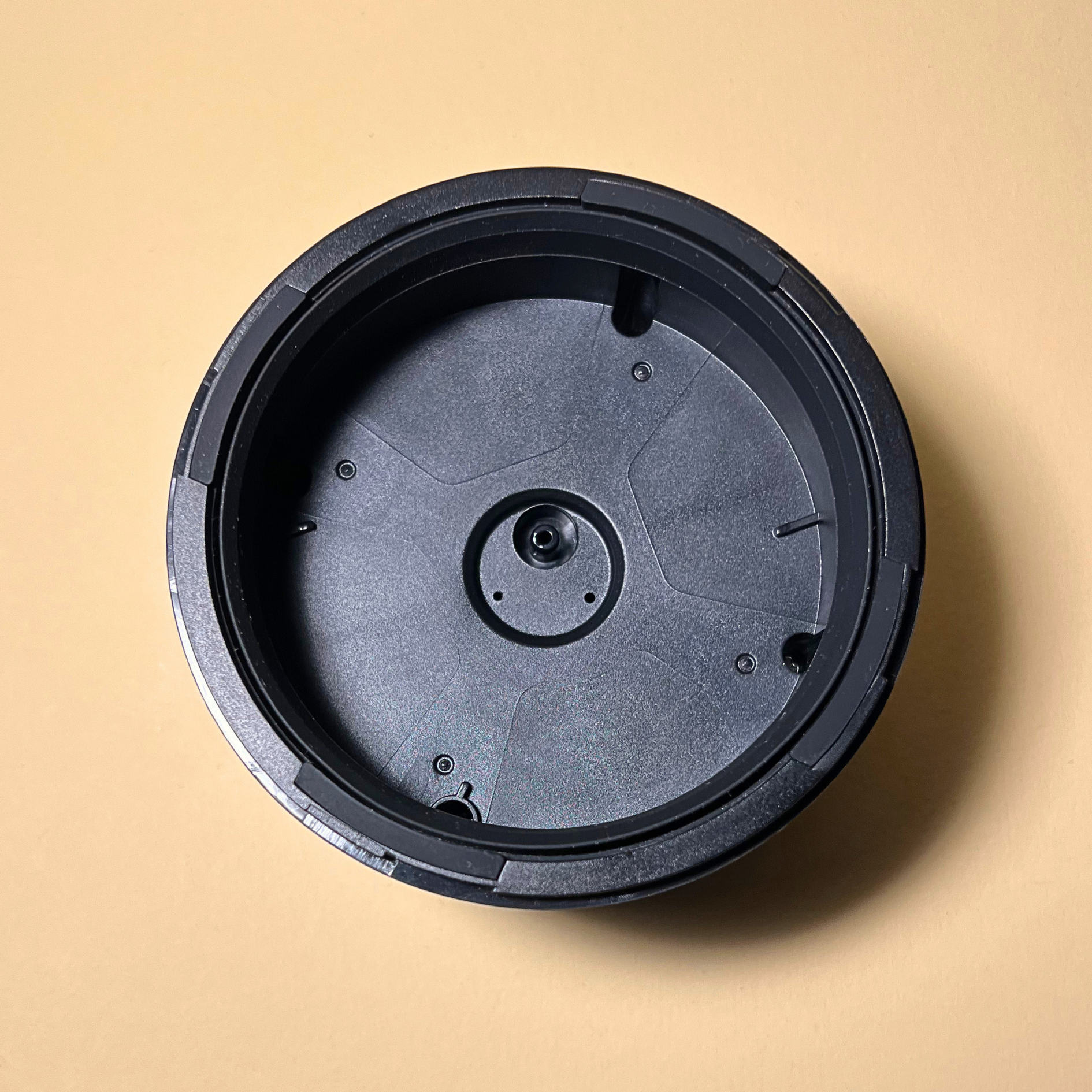Help
Do you need help using your EcoSeal Pro? You've come to the right place!
Do you have questions about using your EcoSeal Pro? No problem! Here you will find detailed instructions, troubleshooting and useful tips to help you get the most out of your device. Watch our explanatory video to see the process in action or take another look at the manual:
How to use your EcoSeal Pro correctly
Prepare the jar
- Fill the jar with food or the product you want to vacuum seal. Make sure that the fill level is not too high and that there is enough space for the lid. The contents should not go beyond the thread line.
- Clean the rim: Wipe the rim of the glass with a clean cloth to ensure that no food residue or moisture affects the seal.
- Check the lid: Check that the lid is clean and intact. A damaged or dirty lid can prevent the vacuum from working. The rubber ring on the inside of the lid is particularly important. Small dents on the top are usually not a problem.
- Screw on the lid: Screw the lid onto the jar moderately tightly . If the lid is too loose, it could come off during vacuuming. If it is too tight, no air can be sucked out of the jar. If in doubt, it is better to screw it too tight than too loose.
Install EcoSeal Pro
- Check the rubber lip: Make sure that the rubber lips on the EcoSeal Pro and the adapter are clean and correctly inserted. Even a slightly displaced rubber lip can affect the vacuum. If necessary, remove the rubber lip and carefully reinsert it.
- Position the device: Place the EcoSeal Pro straight onto the lid of the jar. The rubber lip should rest evenly on the lid and seal well with the edge of the jar.
- Press lightly: Gently press the EcoSeal Pro down to ensure a good seal.
Turn on the device
- Press the power button: Press the on/off button to start the vacuuming process.
- Wait: The EcoSeal Pro needs about 40 seconds to create an optimal vacuum. If necessary, you can adjust the running time using the plus and minus buttons.
- Pay attention to the noise level: A consistent operating noise indicates that the device is working properly. Unusual noises can indicate a leak.
After sealing
- Remove the device carefully: Pull the EcoSeal Pro straight up. If it is difficult to remove, tilt it slightly to the side to break the vacuum.
- Check the seal: Make sure the lid is firmly in place and does not move easily. A dull sound when you tap the lid is a sign of a successful vacuum.
- Screw the lid tight: Now screw the lid tightly onto the jar to ensure the seal.
- Storage: Store the sealed jar in a suitable place. Observe the recommended storage conditions for the contents.
Trouble Shooting
- Check the rubber lip: The most common problem is an incorrectly inserted rubber lip in the EcoSeal Pro. If it slips slightly, it can no longer seal airtight. Remove the rubber lip completely and carefully reinsert it so that it sits evenly.
(See slider below)


How to insert the rubber lip correctly:
- Lid screwed on too tightly/weakly: The screw lid should only be tightened moderately during vacuuming. If it is tightened too tightly, the vacuum sealer cannot suck air out of the jar. If the lid is tightened too loosely, it can fall off during vacuuming.
- Jar is not suitable: We supply 3 jars with each EcoSeal Pro, which are 100% compatible. We cannot guarantee this compatibility for all other jars. To test whether a jar is compatible, place the vacuum sealer on the jar with the lid, switch the device on and lift the vacuum sealer up while it is running. If the jar is lifted up, the EcoSeal Pro can create a seal and the glass is compatible, otherwise not. More information
- Rim of glass or lid moist inside: Make sure that the rim of the glass and the lid are dry inside to ensure an airtight seal.
- Do not rotate the device: Be careful not to rotate the EcoSeal Pro while putting it on, as this could cause the lid to unscrew again.
- Fully charge EcoSeal Pro: Low battery levels can affect performance. Fully charge the device before use.
- Try longer: Run the EcoSeal Pro for up to 60 seconds to create a stronger vacuum, especially for larger jars.
- Use an adapter: If you're having trouble creating a vacuum, try using the adapter provided. This may provide a better seal with certain jars.
Important information for the safe use of the EcoSeal Pro
Vacuum sealing can significantly extend the shelf life of food but does not replace basic hygiene practices or proper storage. The EcoSeal Pro is not a substitute for proven preservation methods such as canning or freezing and does not protect against all food-related risks.
General safety instructions:
- Food-specific storage recommendations: Always follow the recommended storage conditions for each type of food (e.g. always keep meat, fish, and dairy products refrigerated or frozen).
- Keep refrigerated and consume promptly: Vacuum-sealed food often stays fresh longer, but you still need to keep it cold and use it in time. Vacuum sealing is not a replacement for proper refrigeration.
- If in doubt, throw it out: If you're unsure about the safety or quality of a food item, it's better to discard it. Even small changes in smell, color, or texture can be warning signs.
- Warning: Risk of botulism! The bacterium Clostridium botulinum can grow in low-oxygen environments (such as inside a vacuum-sealed container) and produce dangerous toxins—especially in low-acid foods like pumpkin, root vegetables, or garlic. Never store such foods at room temperature for too long. Always follow general hygiene guidelines. Keep in mind: Even careful vacuum sealing cannot fully prevent botulism—refrigeration, heat treatment, or sufficient acidification are still necessary.
- Add acidity for longer shelf life: Adding lemon juice or vinegar (or salt for pickled foods) can increase acidity and help extend shelf life even further.
Tips for safe storage:
Fresh foods (fruit, vegetables, meat):
- Sliced fruit should be stored in the fridge and can be sprinkled with lemon juice to keep it fresh longer.
- Moisture-rich fruit (e.g. strawberries) should be vacuum-sealed with a paper towel to absorb excess liquid.
- Raw meat must always be kept chilled and used within the recommended time frame.
Dry foods:
- Dry foods are ideal for vacuum sealing. They don’t spoil easily but may lose quality over time.
- Vacuum sealing offers additional protection from pests (e.g. pantry moths).
Cooked meals:
- Cooked meals should be vacuum-sealed immediately after cooling and stored in the fridge.
- As with fresh foods, vacuum sealing extends shelf life but does not replace refrigeration.
Additional practical tips:
- Portioning: Divide larger amounts into portions before vacuum sealing. This avoids reopening and resealing, which can reduce shelf life.
- Minimize residual moisture: Pat meat or vegetables dry before sealing to prevent condensation inside the jar. Moisture promotes bacterial growth and shortens shelf life.
- Label your food: Mark vacuum-sealed containers with the date and contents. This helps you track your inventory and use food before it spoils.
💡 Note: These recommendations are based on widely accepted hygiene and storage guidelines. For specific advice on certain foods or health concerns, consult professional resources or contact a specialist (e.g. nutritionist or food safety authority).
Frequently Asked Questions
Any questions left? No problem.
Contact
-
Customer service
support@sealit.at -
More tips, news & promotions:




